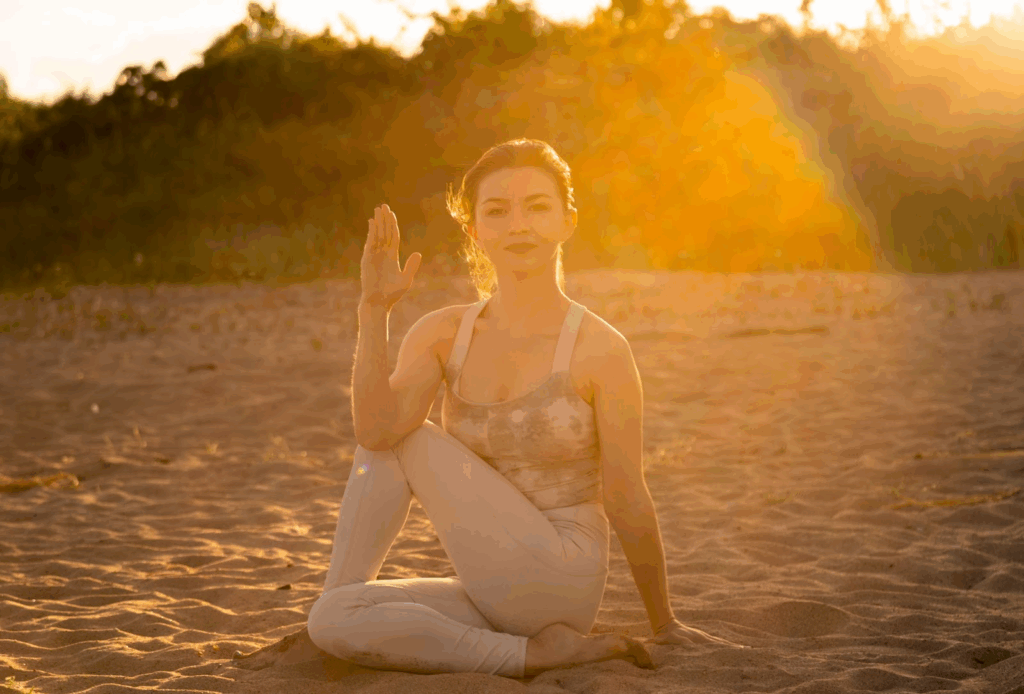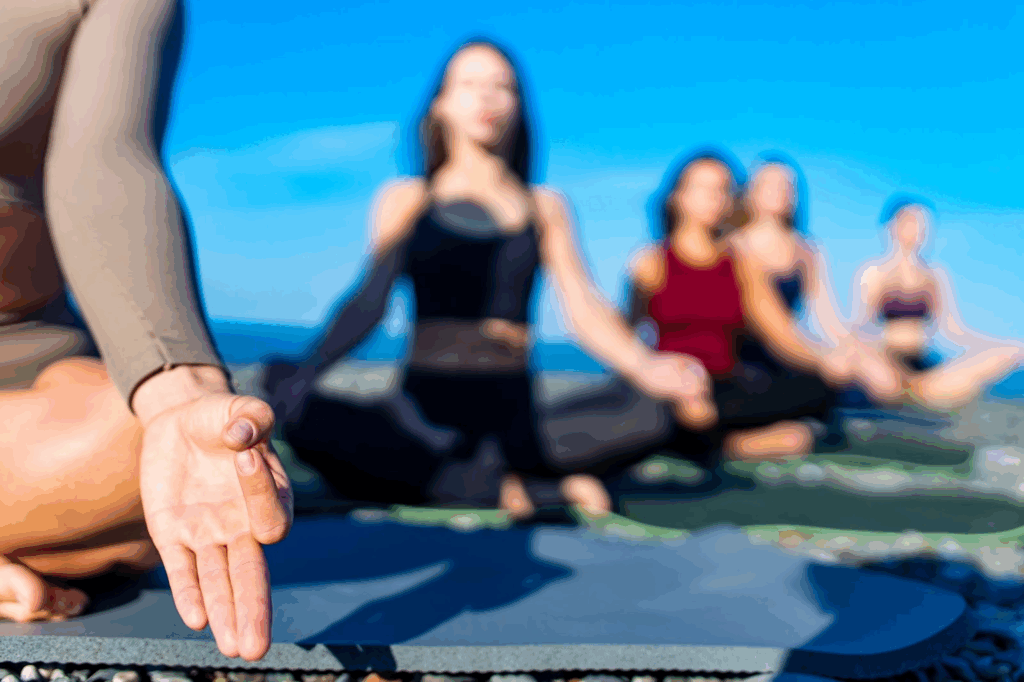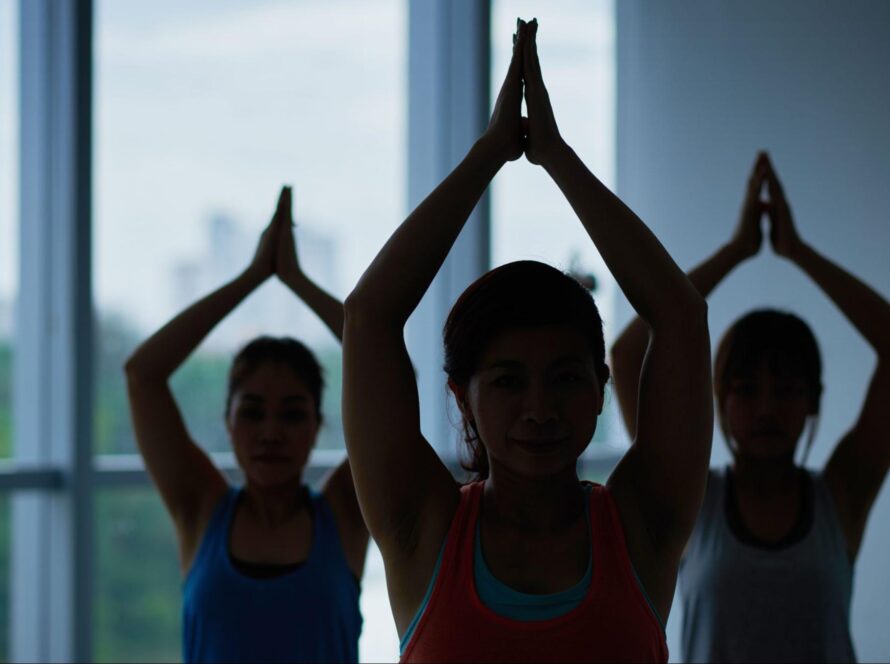At its simplest, yoga is a training ground for attention, breath, and behavior. This integrated practice helps you live with more steadiness, clarity, and care. It blends movement, breathing, ethics, and reflection into a practical philosophy that you can apply to work, relationships, and rest. Rather than chasing a perfect pose, the aim is to align daily choices with what matters most, so your body, mind, and values pull in the same direction.
Adapting Yoga to Fit Your Life
The tradition began thousands of years ago and keeps evolving because life keeps changing. In ancient texts, practitioners explored concentration, self-study, and disciplined action; modern classrooms translate those ideas into sequences that strengthen joints, calm the nervous system, and sharpen attention. What stays constant is the commitment to honest awareness. When you step onto the mat—or pause for three deliberate breaths at your desk—you practice meeting reality without flinching and responding with integrity.
Yoga in History and Philosophy Without the Dust
While historians debate exact timelines, the broad arc points to a toolbox that includes ethical guidelines, breath regulation, sensory discipline, focused attention, and absorption. You don’t have to memorize Sanskrit to benefit. The philosophy invites questions anyone can use: What are you aiming at? What helps you keep your word when no one’s watching? How do you handle desire, frustration, and praise? In this way, yoga becomes less about acrobatics and more about agency.
On The Mat and Far Beyond it—Yoga’s Impact
Practice begins with shapes and breath but doesn’t end there. The real test comes after class, when deadlines loom and conversations become thorny. If you can breathe, notice, and choose your next step instead of reacting on autopilot, the practice is working.
Postures are Tools, Not Goals
Shapes teach alignment, attention, and patience, allowing you to move more effectively through daily life.
Breath Guides the System
Steady breathing signals safety to the body and helps your mind organize under pressure.
Attention Changes Quality
Where you place attention changes how effort feels and how long you can sustain it.
Yoga and The Nervous System in Real Time
Stress isn’t just a feeling; it’s a physiological state. Slow, even breathing paired with mindful movement nudges the autonomic nervous system toward balance. Muscles release unnecessary tension, heart rate variability may improve, and the mind gains space to prioritize. Over time, that “micro-reset” becomes a skill you can access in traffic, on a call, or during conflict, reducing emotional residue that would otherwise follow you into the next task.
Strength, Mobility, and Balance Increases From Yoga
Many people are surprised by the strength of mindful movement. Holding a pose builds endurance; transitioning with control improves joint stability; balancing requires focused attention that lights up smaller, often neglected muscles. The result is a body that’s both capable and responsive, with fewer mystery aches from long hours at a screen and a better margin for play, work, and aging well.
Strength Through Stillness
Isometric holds build capacity without pounding your joints.
Mobility With Control
Active range of motion teaches your body to own new positions, not just visit them.
Balance as Brain Training
Balancing refines coordination and attention while lowering fall risk over time.
Yoga and Mental Health That Extends Beyond Mood
The combination of movement, breath, and attention can reduce rumination and widen your window of tolerance. You learn to notice thoughts without chasing them and to let sensations rise and fall without panic. This makes it easier to return to the task at hand, to pause before reacting, and to offer yourself the same kindness you’d extend to a friend. While it’s not a replacement for clinical care, the practice pairs well with therapy and medication by training everyday regulation.
Yoga in Many Styles, So You Can Find a Fit
Different lineages emphasize different levers—heat, stillness, strength, or subtlety. Sampling helps you discover what keeps you consistent. The best style is the one you’ll actually do, not the one that looks impressive online.
Hatha and Vinyasa
Hatha moves slower with explicit instruction; vinyasa links breath and motion for a steady, flowing movement.
Yin and Restorative
Yin targets deep tissues through long holds, while restorative uses props to gently downshift the nervous system.
Kundalini and Mantra
Rhythmic breath, sound, and sequences challenge mental patterns and build energetic stamina.
Beginning Yoga
If you’re new, you don’t need fancy gear or extreme flexibility. Start with a beginner-friendly class or a short home session, focusing on breath first, alignment second, and range of motion third. Keep curiosity high and expectations low. The goal is not to dominate a pose but to learn how your body communicates—and to respond without forcing. The more you honor boundaries, the faster capacity grows.

Yoga in Daily Life Without Adding More to Your Schedule
Practice can fit inside ordinary moments. A minute of breathing before a meeting, a gentle twist after emails, or a mindful walk to your car all count. The trick is attaching small rituals to things you already do, so momentum doesn’t depend on willpower. Over weeks, those micro-sessions compound into better sleep, less jaw clenching, and a steadier tone in conversations you used to dread.
Micro Practices
Tiny, repeatable actions beat heroic but rare efforts.
Intentional Transitions
Use the space between tasks to reset attention and mood.
Compassionate Check Ins
Ask what would help right now and do the smallest version of it.
Treating the Yoga Community and Culture With Respect
This practice grew from specific cultures and philosophies; treating it with respect enriches your experience. Learn from teachers who acknowledge roots, cite sources, and welcome diverse bodies and abilities. Community adds accountability and joy, transforming solo effort into shared practice. Over time, you may find that being part of something larger than yourself becomes one of the most nourishing aspects of the path.
Yoga for Special Populations and Responsible Safety
Athletes, older adults, pregnant individuals, and those managing chronic conditions can all benefit from tailored approaches. Clear communication and innovative use of props make the difference between strain and growth. If you’re navigating injuries or medical concerns, collaborate with healthcare providers and choose instructors who welcome questions. Safety is not the opposite of progress; it’s how progress lasts.
Medical Collaboration
Loop in clinicians when conditions, surgeries, or medications are in play.
Pain Versus Sensation
Discomfort that eases with breath can be productive; sharp pain is a stop sign.
Props are Intelligent
Blocks, straps, blankets, and walls help you find alignment without forcing range.
A Portable Reset With Yoga and Breathwork
Breathing practices are the most transferable skill you’ll learn. Extending exhales calms the system, gentle breath holds build resilience, and nasal breathing supports focus. Because your breath travels with you everywhere, it becomes a reliable lever when schedules become chaotic or emotions surge. With even a few weeks of practice, you’ll notice you can meet spikes of stress with steadier hands.
Lengthen the Exhale
A slightly longer out-breath cues the body toward rest and recovery.
Keep it Light
Comfortable, quiet breaths are more sustainable than dramatic ones.
Pair With Posture
A tall, easy spine makes breathing feel less like work and more like relief.
Yoga and Ethics When No One is Watching
Movement is only one limb of the tradition. Equally important are practical ethics, such as non-harm, honesty, wise use of energy, and contentment. These aren’t rigid rules but living questions. How do you tell the truth kindly? Where can you simplify to free attention for what matters? Which commitments need renewal or release? Practicing these off the mat protects the progress you make on it and aligns strength with purpose.
What Type of Yoga Aids with Performance Recovery and Longevity?
Whether you’re training for a marathon or a demanding career, capacity depends on how well you recover. Gentle sequences can flush residual tension, joint preparation can prevent overuse, and mindful rest can restore the quality of effort you bring tomorrow. When you treat recovery as part of the work—not a reward after it—you can push hard without burning through the resources that keep you kind and creative.
Alternate Gears
Learn to shift between focus and ease so that intensity doesn’t remain high.
Prepare Not Punish
Warm up joints before loading them and end sessions with a gradual downshift.
Sleep as Practice
Protecting rest makes every other session more effective.

Sustainable Progress With Yoga that Respects your Life
The most powerful routine is the one you keep. Three twenty-minute sessions can be more effective than a single marathon class, especially during busy seasons. Track how you feel rather than chasing external metrics alone. If mood, patience, or clarity improve, the practice is working even if your handstand remains theoretical. Let the seasons guide the intensity, and keep revisiting why you started, so motivation stays renewable.
Consistency Over Intensity
Small, regular practice builds capacity you can trust.
Personalization Matters
Adapt sequences to your body, goals, and schedule so they fit without friction.
Curiosity Beats Perfection
Treat each session as an experiment rather than a test.
Yoga is the Path You can Start Today
You don’t need to wait for the perfect studio, outfit, or schedule. Pick a simple sequence, attach it to a time of day you control, and keep the bar low enough to clear even on hard days. Notice not just how your hamstrings feel but how you speak to yourself, how you listen, and how you re-enter conversations after stress. That is the quiet promise of this practice: by training attention, breath, and behavior in small, honest ways, you build a life with greater strength, greater ease, and more room for what truly matters.
Visit The Living Church blog to learn more yoga techniques.



